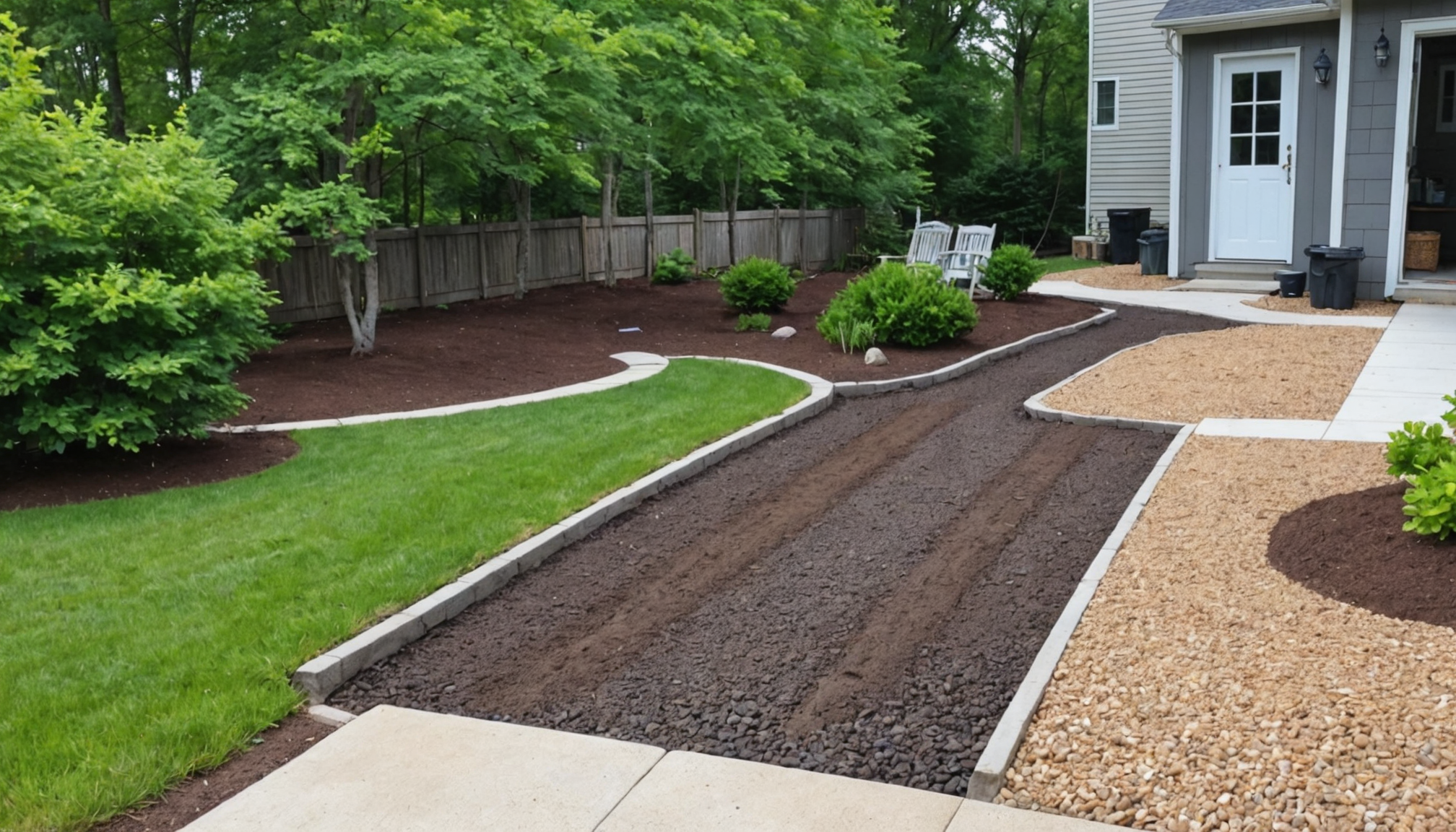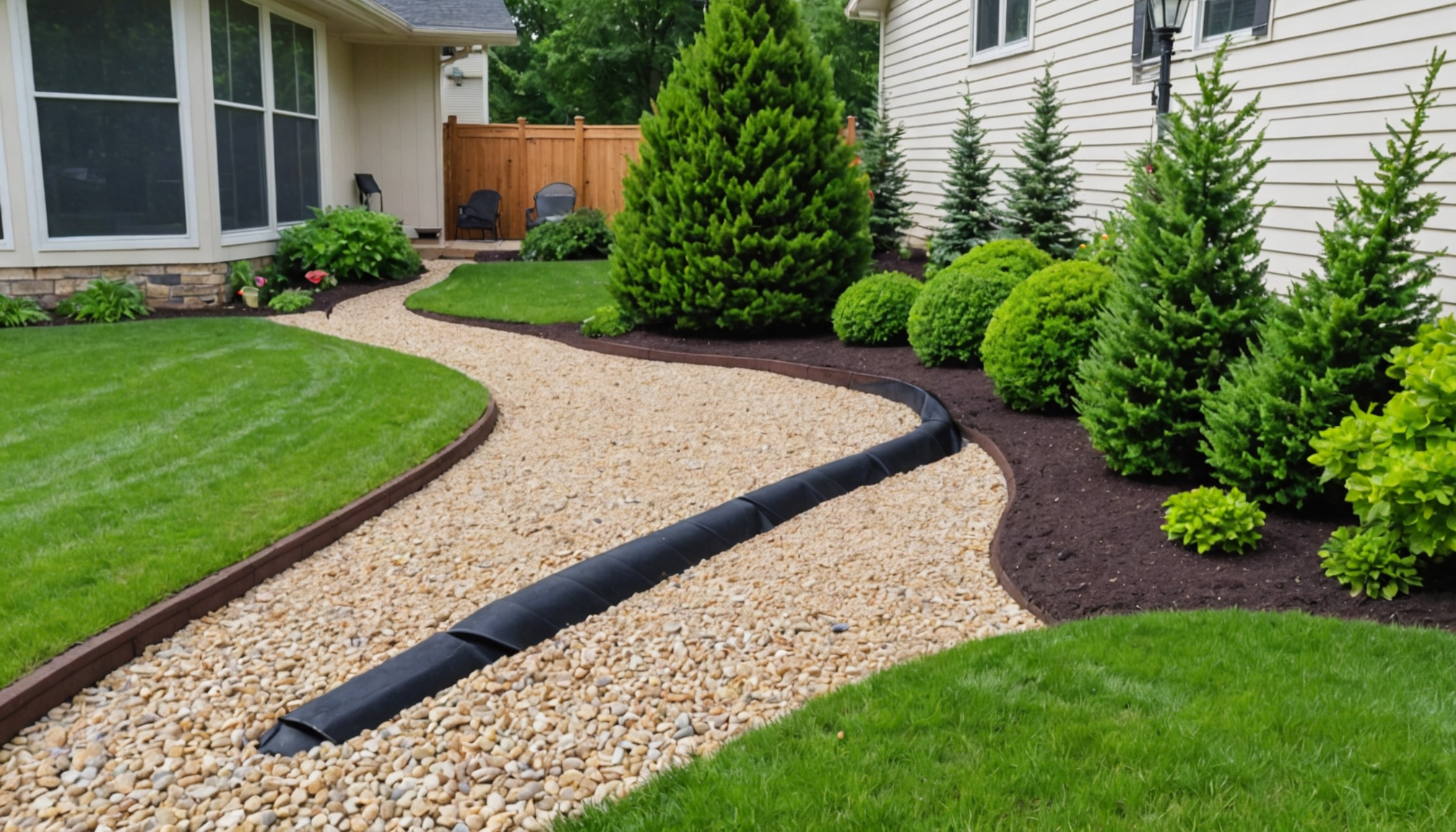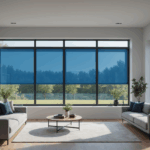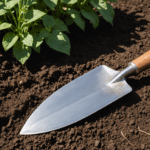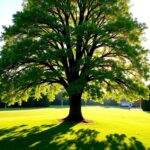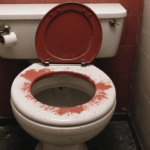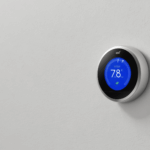Jacksonville’s unique geographical location and climate create specific challenges for homeowners when it comes to yard drainage. With an average annual rainfall of 52 inches, significantly higher than the national average of 38 inches, properties in Jacksonville face persistent water management issues. According to the National Weather Service, the city experiences approximately 114 days of precipitation per year, making effective drainage solutions crucial for property maintenance.
The most prevalent drainage problems in Jacksonville stem from its predominantly flat terrain and clay-rich soil composition. The Natural Resources Conservation Service reports that over 60% of Jacksonville’s soil consists of poorly draining clay, which significantly impedes natural water absorption. During heavy rainfall events, this soil composition often leads to standing water, which can remain for days if proper drainage systems aren’t in place.
Common issues Jacksonville homeowners face include:
- Pooling water near house foundations, affecting structural integrity
- Saturated lawns that become muddy and unusable
- Erosion along property boundaries
- Water accumulation in low-lying areas
- Basement and crawl space flooding
- Foundation damage due to hydrostatic pressure
Local landscaping experts from the University of Florida’s IFAS Extension note that improper grading is responsible for approximately 40% of residential drainage issues in Jacksonville. When properties lack the recommended minimum slope of 1 inch per foot away from structures, water naturally gravitates toward building foundations, causing significant damage over time.
Climate change has exacerbated these problems, with the Florida Climate Center reporting a 12% increase in intense rainfall events over the past decade. This trend has made previously adequate drainage systems insufficient for current precipitation patterns, requiring many homeowners to upgrade their water management solutions.
The financial impact of poor drainage can be substantial. According to the American Society of Home Inspectors, foundation repairs resulting from water damage typically cost between $3,000 and $25,000, while addressing widespread lawn damage can require extensive landscaping investments ranging from $2,000 to $10,000. These figures underscore the importance of implementing proper drainage solutions before serious problems develop.
Types of yard drainage solutions
Jacksonville homeowners have several effective options for managing excess water on their properties, each suited to different terrain conditions and severity of drainage issues. Professional landscaping contractors typically recommend a combination of solutions to create a comprehensive drainage system that addresses specific property challenges.
Surface drainage solutions remain the most straightforward and cost-effective approach. These include proper grading techniques that create a minimum 2% slope away from structures, ensuring water naturally flows toward designated collection points. Strategic landscaping with water-loving plants and rain gardens can help absorb excess moisture while adding aesthetic value to the property.
Subsurface drainage systems offer more robust solutions for persistent water problems. French drains, consisting of perforated pipes surrounded by gravel, effectively channel water away from problem areas. For properties with severe flooding issues, sump pump systems can actively remove water from low-lying areas, while catch basins serve as collection points for surface runoff.
Bioswales represent an eco-friendly drainage solution gaining popularity in Jacksonville. These landscaped channels combine natural filtration with effective water management, typically reducing runoff by 30-40% according to local water management district data. They’re particularly effective when integrated with existing yard slopes and natural water flow patterns.
Cost considerations vary significantly based on the chosen solution. Basic surface grading might cost $500-$2,000, while comprehensive drainage systems incorporating multiple solutions can range from $3,000-$15,000. However, these investments typically prove cost-effective when compared to potential water damage repairs.
- Professional drainage assessments can identify the most effective solution combinations for specific properties
- Regular maintenance of any drainage system is crucial for long-term effectiveness
- Local building codes may require permits for certain drainage installations
- Natural solutions like rain gardens can provide both drainage and aesthetic benefits
Swales and their effectiveness
Creating effective swales requires careful planning and precise execution, but many property owners encounter common pitfalls that reduce their effectiveness. One frequent mistake is making swales too shallow, which limits their water-carrying capacity. In Jacksonville’s climate, swales should typically be at least 6-8 inches deep with gradual side slopes to effectively manage heavy rainfall.
Poor grading represents another significant issue, where swales lack the recommended minimum slope of 1-2% needed for proper water movement. This often results in standing water that can become a breeding ground for mosquitoes and cause soil erosion. Professional landscaping contractors recommend conducting thorough topographical surveys before installation to ensure proper slope calculations.
Improper vegetation management also diminishes swale effectiveness. While some homeowners mistakenly keep swales completely bare, others allow excessive vegetation growth that impedes water flow. The ideal approach involves maintaining a healthy grass cover that helps prevent erosion while facilitating drainage. Jacksonville-specific grass varieties like Zoysia or Bermuda work particularly well for swale stabilization.
Maintenance oversights can severely impact performance. Many property owners forget to regularly remove accumulated debris, leading to blocked water flow. Monthly inspections and clearing of leaves, branches, and sediment build-up are essential for optimal functionality. Additionally, failing to repair erosion damage promptly can lead to complete system failure.
Inadequate connection to existing drainage systems is another common error. Swales should properly connect to other drainage features or appropriate discharge points. Without proper termination points, water may back up or create new problem areas. Local drainage experts recommend ensuring swales direct water to designated storm drains or retention areas when possible.
Incorrect sizing represents a critical mistake in swale design. Many DIY installations fail to account for the drainage area’s size and typical rainfall intensity in Jacksonville. Professional calculations suggest that swale capacity should handle at least 1.5 times the expected peak water flow to prevent overflow during severe storms.
Neglecting soil composition can also lead to swale failure. Clay-heavy soils common in Jacksonville require wider, more gradually sloped swales to prevent erosion and ensure proper water movement. Some homeowners make the mistake of using the same dimensions regardless of soil type, leading to decreased effectiveness or complete system failure.
French drain installation and maintenance
A successful French drain installation begins with precise planning and proper site evaluation. The process requires careful consideration of the soil composition, slope, and existing drainage patterns. In Jacksonville’s clay-rich soil, installation depths typically range from 18 to 24 inches, significantly deeper than in areas with better-draining soil types.
The first critical step involves accurate grading and trenching. The drain must maintain a consistent slope of at least 1% (1-inch drop per 10 feet) to ensure proper water flow. Professional contractors use laser levels to achieve this precision, as even minor grading errors can compromise the entire system’s effectiveness.
Material selection plays a crucial role in longevity. High-quality perforated PVC pipes (4-6 inches in diameter) wrapped in landscape fabric prevent soil infiltration while allowing water entry. The drainage rock should be clean, uniformly-sized gravel (3/4 to 1-1/2 inches) to maximize water flow capacity. Jacksonville’s aggressive rainfall patterns demand approximately 12 inches of gravel surrounding the pipe for optimal performance.
Maintenance requirements include:
– Quarterly inspection of intake grates and exit points
– Annual flushing of the system using high-pressure water
– Regular clearing of surface debris that could clog intake points
– Monitoring for signs of reduced drainage efficiency
– Checking for root intrusion every 2-3 years
Common installation mistakes to avoid:
– Using incorrect gravel sizes or mixing different grades
– Failing to wrap the system in filter fabric
– Installing at insufficient depth
– Not maintaining proper slope throughout the run
– Connecting downspouts without debris filters
Professional landscaping experts recommend conducting maintenance checks before Jacksonville’s rainy season begins in June. This proactive approach helps identify potential issues before they become serious problems. While the initial installation cost ranges from $2,000 to $6,000 depending on length and complexity, proper maintenance can extend the system’s lifespan to 20+ years.
For optimal performance in Jacksonville’s climate, integrate French drains with complementary drainage solutions like surface swales or catch basins. This comprehensive approach provides redundancy during extreme weather events and ensures consistent yard drainage throughout the year.
Remember that while maintenance might seem time-consuming, it’s far less costly and disruptive than having to replace a failed system. Regular attention to these maintenance tasks will protect your investment and keep your property dry for years to come. With proper installation and care, you’ll have a reliable solution that stands up to Jacksonville’s challenging weather patterns.
Sump systems for severe flooding areas
- How do I know if my property needs a sump system?
- Properties experiencing frequent flooding, particularly in basements or crawl spaces, are prime candidates for sump systems. In Jacksonville’s climate, if you notice standing water that persists for more than 24 hours after rainfall, or if your property sits in a low-lying area, a sump system may be necessary.
- What’s the average cost of installing a sump system in Jacksonville?
- Professional sump system installation typically ranges from $2,500 to $5,000, depending on the complexity and size of the system. This cost includes the sump pump, basin, necessary drainage pipes, and professional installation with proper grading considerations.
- How often should I maintain my sump pump system?
- Sump pumps require quarterly inspections and annual professional maintenance to ensure reliable operation. In Jacksonville’s climate, it’s particularly important to check the system before the rainy season begins and after any severe storms.
- Can I install a sump system myself to save money?
- While DIY installation is possible, professional installation is strongly recommended due to the complexity of proper drainage calculations and local building codes. Incorrect installation can lead to foundation damage and flooding, potentially costing much more in repairs than professional installation.
- What happens if the power goes out during a storm?
- A battery backup system is essential for sump pump operation during power outages, which are common during Jacksonville’s severe weather events. Professional landscaping contractors recommend installing a backup power system that can run the pump for at least 24-48 hours without main power.
